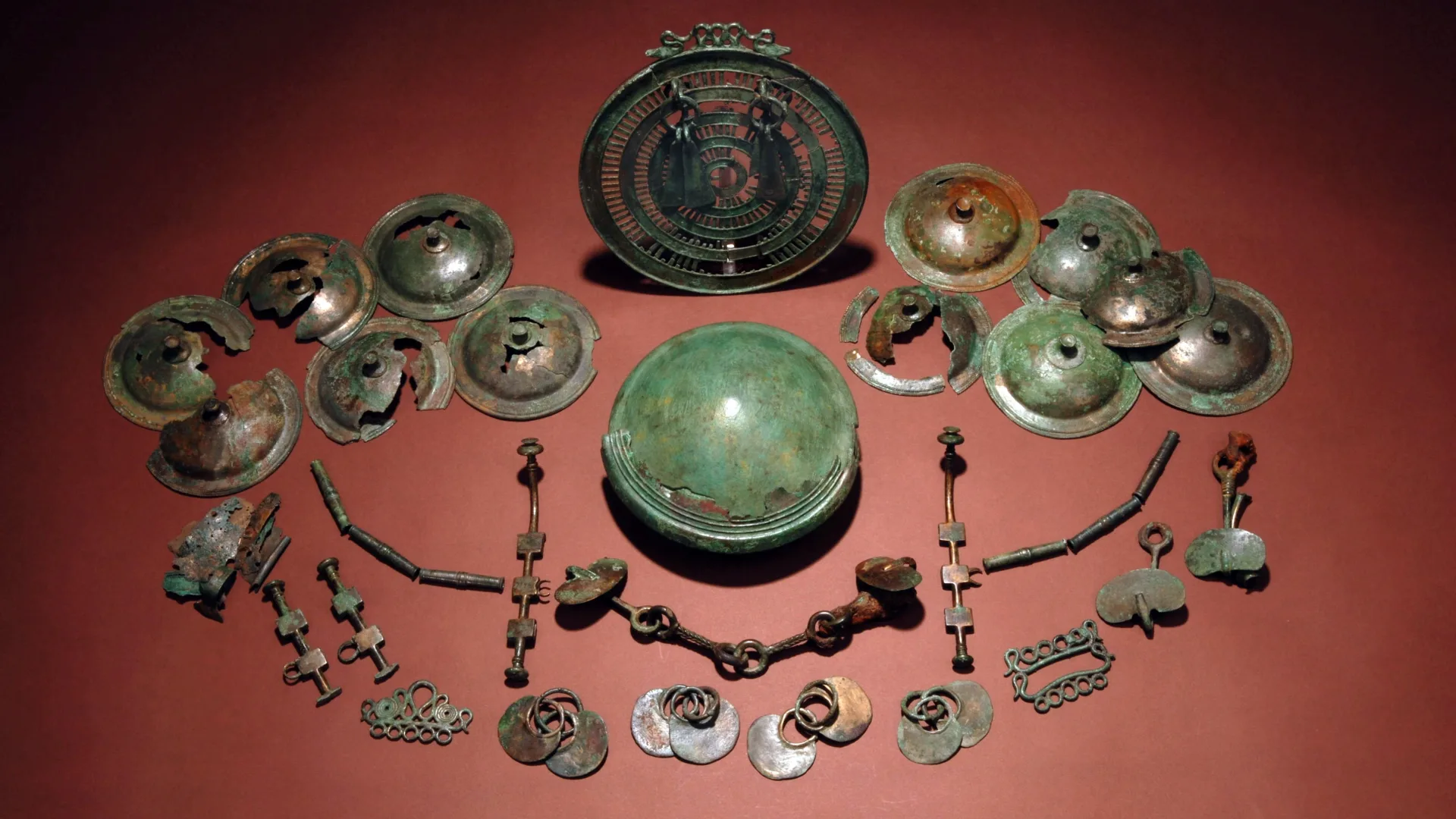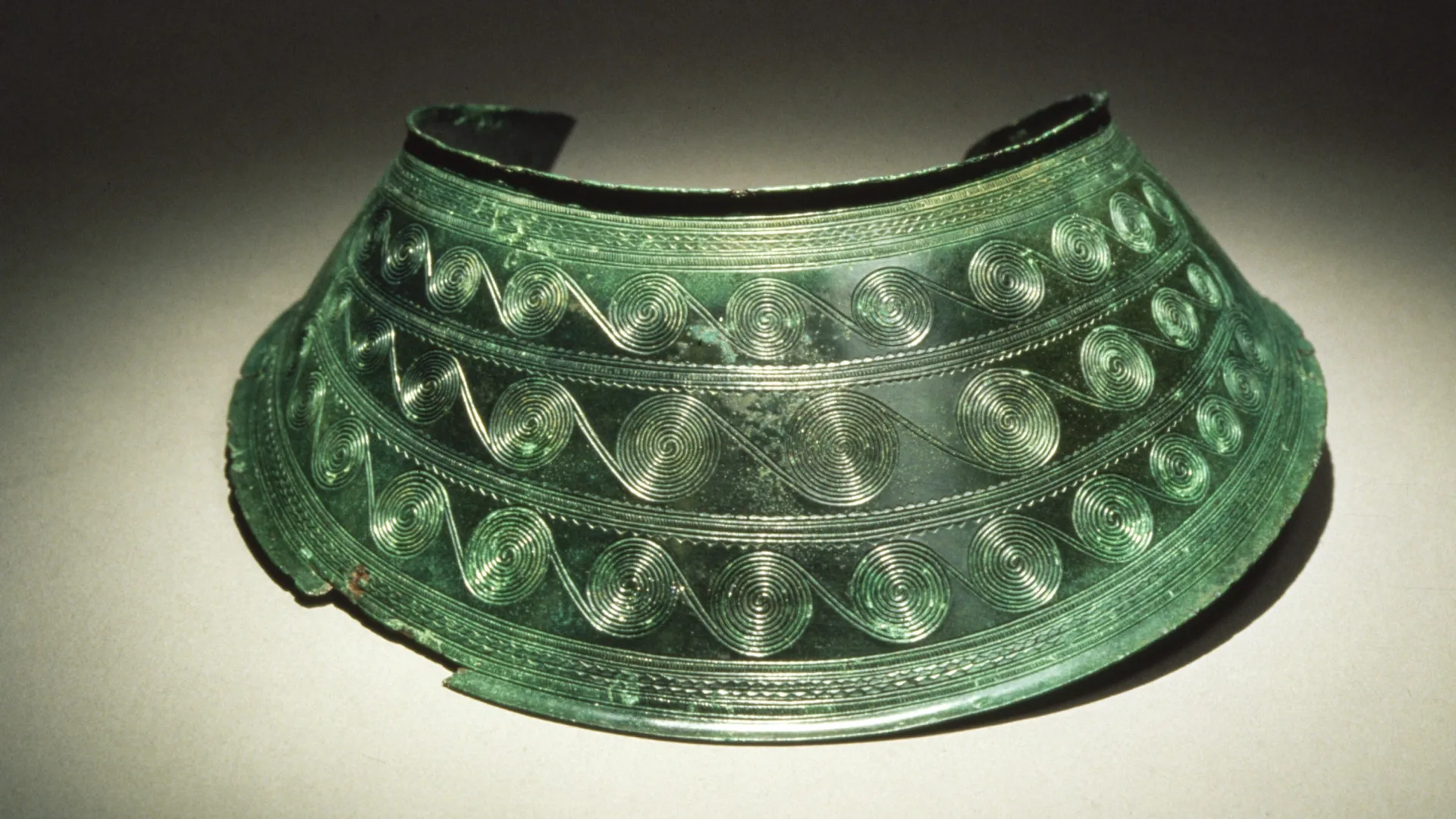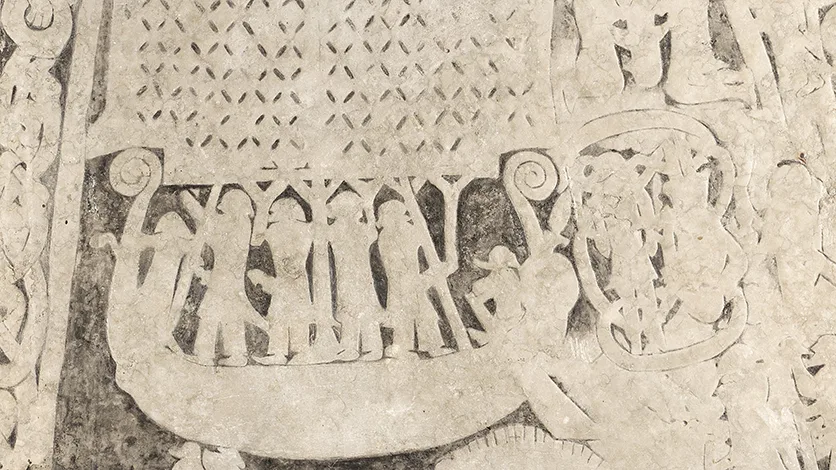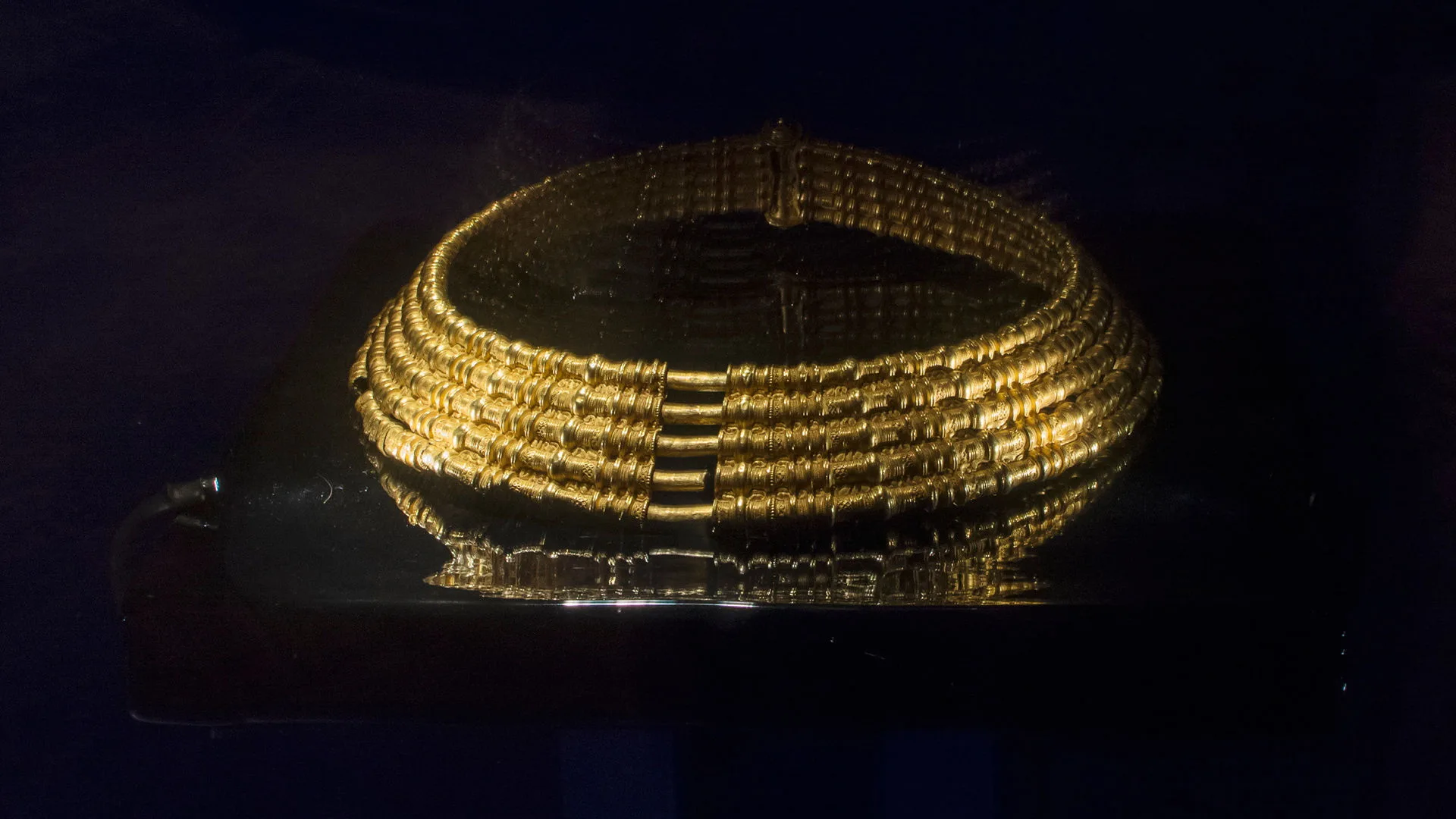Equestrian gear of a Bronze Age goddess
Stone Age
12,000 BC – 1700 BC
Bronze Age
1700 BC – 500 BC
Iron Age
500 BC – AD 1100

Horses arrived in the Nordic region from Central Europe around 2500 BC. Some of the oldest pieces of horse equipment found in Scandinavia were discovered together with women’s jewellery. Some archaeologists believe this may be connected to a goddess cult devoted to the goddess Nerthus, who represented fertility and peace.
Two of the oldest sets of horse equipment in Sweden were found together at Eskelhem vicarage on the island of Gotland. They were buried in the earth over 2,500 years ago, likely as offerings to a deity. The find includes a large round openwork bronze disc with dangling pendants, twelve domed bronze bosses with side loops, two bits with cheek-pieces, four rings with jingling bronze strips, additional bronze ornaments, and parts of metal vessels.
The horse gear from Eskelhem was not made on Gotland. It originated in Central Europe, where the horse was first introduced around 2500 BC.

Bronze disc with pendants
On view at Historiska museet in the exhibition Forntider 1
Small horses
The bits suggest that the horses were small, roughly the size of today’s Gotland ponies. The twelve domed fittings were mounted on the harness, six per horse. The jangling rings were attached to the bits. These consisted of thin sheets of bronze that hung loosely, producing a clattering or jingling sound when the horses moved.

The fact that there were two full sets of harness implies the horses formed a pair, likely pulling a wagon though no wagon parts were found when the discovery was made in the late 1800s. The large openwork disc with pendants, which would also have rattled during movement, may have adorned such a wagon. Some archaeologists interpret it as a solar symbol.
Bronze Age women's jewellery
Among the horse fittings was also a belt bowl. It is a large, often decorated bronze bowl with mounts designed to be fastened at the lower back of a woman’s outfit. Combinations of horse (and sometimes wagon) equipment with female dress ornaments have been found across northeastern Europe.

Bronze belt bowl
Used as part of ceremonial attire.
Nerthus brought feasts and peace
One goddess believed to have origins in the Bronze Age is the fertility goddess Nerthus (or Njord, as she is sometimes called) known from the Iron Age. The myth of Nerthus was recorded by the Roman historian Tacitus in the 1st century AD.
According to his account, this earth goddess dwelled in a sacred grove on an island in the ocean. From time to time, she travelled across the land in her holy wagon, accompanied by a priest. Wherever she went, people celebrated with feasts and laid down their weapons.
Coveted and exclusive
The status of the horse as an exclusive animal in Scandinavia is evident in rock carvings and figurines from as early as 1500 BC. In mythological images, horses appear alongside the sun and ships, on jewellery, weapons, and rock art.
When the people of Gotland, 700–800 years later, placed the first horse equipment, worn from use, together with women’s jewellery, we know that domesticated horses existed at the settlements as working animals.





